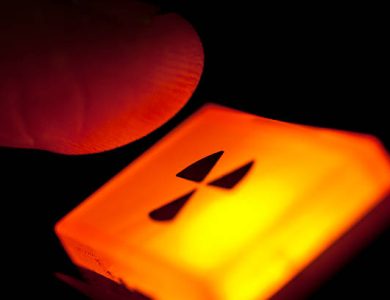In the realm of printing, two primary types of cartridges dominate the market: toner cartridges and ink cartridges. These components are essential for two distinct types of printers – laser printers and inkjet printers, respectively. An intriguing question often surfaces: do toner cartridges outlast ink cartridges in terms of lifespan? Delving into this query unravels a host of fascinating insights into the inner workings of these cartridges and the factors that influence their longevity. If you want to sell ink cartridge then feel free to visit us.
Understanding Toner Cartridges and Ink Cartridges
Toner Cartridges
Toner cartridges are the lifeblood of laser printers, utilizing a unique technology to produce high-quality prints. The process involves using electrostatic charges to adhere toner, a fine powder, onto the paper. This technology results in prints that are sharp and durable. Toner cartridges have characteristics that contribute to their prolonged lifespan. The dry nature of toner, combined with the precision of laser printing, reduces the chances of smudging and fading. Moreover, toner cartridges often boast higher page yields due to their efficient use of toner, making them a popular choice for high-volume printing environments.
Ink Cartridges
Conversely, ink cartridges fuel the operation of inkjet printers. These cartridges contain liquid ink that is sprayed onto the paper to create images and text. The intricate process of propelling liquid ink onto paper provides vibrant color reproduction, but it comes with its own considerations for longevity. Factors such as evaporation and the potential wastage of ink during cleaning cycles can affect the lifespan of ink cartridges. Additionally, the liquid nature of ink makes it more prone to smudging and fading over time, which can impact the overall longevity of prints.
Factors Affecting Lifespan
Printing Volume
Printing volume stands as a significant determinant of cartridge longevity. Both toner and ink cartridges are sensitive to the amount of printing they handle. Toner cartridges, due to their efficient use of toner and laser printing technology, generally exhibit longer lifespans when subjected to high printing volumes. In contrast, ink cartridges might need replacement sooner in environments that demand substantial printing due to the liquid nature of ink and its propensity to run out faster.
When comparing the typical printing capacities of toner and ink cartridges, toner cartridges often come out ahead in terms of higher page yields. This factor, coupled with their resistance to fading and smudging, contributes to their reputation for durability.
Print Quality
Print quality settings significantly influence the longevity of cartridges. The choice between draft, normal, or high-quality printing modes affects the amount of toner or ink used per page. High-quality printing, while yielding better output, consumes more ink or toner, potentially reducing cartridge life. Draft mode, on the other hand, uses less ink or toner but sacrifices some print quality. Thus, finding the right balance between print quality and cartridge longevity is crucial.
Maintenance and Care
Proper maintenance of printers plays a pivotal role in extending cartridge life. Regular cleaning routines, ensuring that printers are kept in optimal conditions, and performing maintenance tasks as recommended by manufacturers can prevent issues that could lead to premature cartridge replacement. For toner cartridges, maintenance mostly involves keeping the printer interior clean, while inkjet printers might require additional care to prevent clogging of the ink nozzles.
Following best practices for maintaining toner and ink cartridges, such as storing cartridges in a cool, dry place, can significantly enhance their lifespan and overall performance.
Longevity Comparison: Toner vs. Ink
Toner Cartridges
Toner cartridges often have a perceived advantage in terms of longevity. This perception is fueled by the higher page yields associated with many toner cartridges. Their efficient use of toner and resistance to smudging and fading contribute to this longevity. Businesses and individuals who engage in high-volume printing tend to prefer laser printers with toner cartridges due to their longer-lasting nature.
Ink Cartridges
Ink cartridges, while producing vibrant prints, may have comparatively shorter lifespans. This can be attributed to the liquid nature of ink, which makes it susceptible to evaporation and other factors that degrade its quality over time. Cleaning cycles in inkjet printers can also lead to ink wastage, reducing the overall lifespan of ink cartridges.
Cost Considerations
Toner Cartridges
Toner cartridges often have a higher upfront cost compared to ink cartridges. However, when analyzing the cost per page, toner cartridges tend to be more cost-effective in the long run, especially for high-volume printing. The higher page yields and reduced need for replacement contribute to these cost savings.
Ink Cartridges
Ink cartridges have the advantage of being initially more affordable. However, their lower page yields and the need for more frequent replacements can accumulate costs over time, particularly for those who print extensively.
Environmental Impact
Toner Cartridges
The longevity of toner cartridges offers potential environmental benefits. With fewer replacements needed, there is less waste generated, and the overall environmental footprint is reduced. The extended lifespan aligns with sustainability goals, making toner cartridges an eco-friendly choice for those conscious of their environmental impact.
Ink Cartridges
Ink cartridges, due to their shorter lifespans and more frequent replacements, can contribute to a higher volume of electronic waste. However, many ink cartridges are designed for recycling, providing an avenue for reducing their environmental impact. Proper disposal and recycling of ink cartridges can mitigate some of the waste concerns.
Conclusion
In the ongoing debate over toner cartridges versus ink cartridges, longevity stands out as a key differentiator. The interplay between printing volume, maintenance practices, print quality, and environmental considerations influences the lifespan of these cartridges. Toner cartridges, with their efficient use of toner, resistance to fading, and longer page yields, often offer extended longevity. Ink cartridges, while producing vivid prints, might require more frequent replacements due to factors like ink wastage and evaporation.
Making informed decisions regarding cartridge selection involves understanding these factors and aligning choices with individual printing needs and sustainability preferences. Whether it’s opting for toner cartridges in high-volume printing scenarios or leveraging the affordability of ink cartridges for lighter usage, users have the power to balance longevity, cost-effectiveness, and environmental consciousness in their printing choices.




